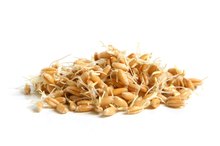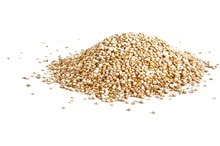What does fact checked mean?
At Healthfully, we strive to deliver objective content that is accurate and up-to-date. Our team periodically reviews articles in order to ensure content quality. The sources cited below consist of evidence from peer-reviewed journals, prominent medical organizations, academic associations, and government data.
The information contained on this site is for informational purposes only, and should not be used as a substitute for the advice of a professional health care provider. Please check with the appropriate physician regarding health questions and concerns. Although we strive to deliver accurate and up-to-date information, no guarantee to that effect is made.
1500-Calorie Diet for Women With Enough Protein
A 1,500-calorie diet can help a moderately active woman lose weight. When devising a diet plan, you need to include a minimum of 0.36 grams of protein per pound of body weight, according to the Institute of Medicine 1. If you weigh 150 pounds, for example, aim for at least 54 grams of protein daily, which amounts to 14 percent of your 1,500-calorie plan. Many common foods contain protein, and including a variety of them in your diet plan fosters good health and a healthy weight 1.
Goals
Protein is an essential macronutrient that supports all the cells in your body 1. It is especially important for dieting women, as it helps you retain lean muscle mass while dropping fat. Eating the minimum 0.36 grams of protein per pound of body weight can help you keep the muscle you have as you lose weight by eating 1,500 calories a day. If you want to add muscle, the minimum 0.36 grams per pound of body weight is not enough. On the "Oxygen Magazine" website, registered dietitian Karen Ansel recommends about 0.75 grams of protein per pound of body weight daily to gain muscle.
- Protein is an essential macronutrient that supports all the cells in your body 1.
- Eating the minimum 0.36 grams of protein per pound of body weight can help you keep the muscle you have as you lose weight by eating 1,500 calories a day.
Satiety
Women's Body Sculpting Diet
Learn More
Increasing your protein to 30 percent of your calorie intake can help you feel more satisfied and stick to your 1,500-calorie plan. A study published in the “American Journal of Clinical Nutrition” in July 2005 had participants increase their dietary protein intake from 15 to 30 percent 1. After 12 weeks, the participants self-adjusted their food intake, eating 441 fewer calories daily which resulted in "significant" weight loss. Consider eating up to 113 grams of protein daily on your 1,500-calorie plan to duplicate the study results. Eating more protein can also help stabilize your blood sugar levels, which can mitigate cravings for sweets that often plague women. A diet with 30 percent of calories from protein still falls within Institute of Medicine Guidelines for good health.
- Increasing your protein to 30 percent of your calorie intake can help you feel more satisfied and stick to your 1,500-calorie plan.
- Consider eating up to 113 grams of protein daily on your 1,500-calorie plan to duplicate the study results.
Protein Sources
Find protein in meats, poultry, fish, eggs and dairy. Soy is one of the few complete vegetable proteins. You can get all the amino acids you need by combining incomplete proteins over the course of a day. Incomplete proteins are found in dried beans and peas, lentils, nuts, seeds, and grains. A 1,500-calorie plan should include a variety of all of these protein sources daily. In addition to protein, meats, eggs and poultry offer iron, which is especially important for menstruating women. Dairy and tofu provide calcium for strong bones, and the dried beans, lentils and grains contain fiber for regularity.
- Find protein in meats, poultry, fish, eggs and dairy.
- Incomplete proteins are found in dried beans and peas, lentils, nuts, seeds, and grains.
Sample Plan
Wheat Germ & Protein
Learn More
A plan that offers 24 percent protein allows for muscle retention and moderate muscle growth, especially when coupled with a regular strength-training routine. For breakfast, have a scrambled egg with two egg whites, a cup of skim milk, eight strawberries and a serving of steel-cut oats. At lunch, make a salad with 3 cups of baby spinach -- which offers you iron and folate -- 1/4 cup of chickpeas, 2 ounces of water-packed tuna and a dressing made with 1/2 tablespoon of olive oil. Have seven woven wheat crackers and a small apple on the side. For dinner, you could eat 1 cup of brown rice with 1/2 cup of roasted chicken breast and five asparagus spears. You have room for two snacks, the first of which is a sandwich made with two slices of whole wheat bread and 1 tablespoon of peanut butter. Your second snack is 6 ounces of non-fat, plain Greek yogurt with 1 cup of blueberries.
- A plan that offers 24 percent protein allows for muscle retention and moderate muscle growth, especially when coupled with a regular strength-training routine.
- At lunch, make a salad with 3 cups of baby spinach -- which offers you iron and folate -- 1/4 cup of chickpeas, 2 ounces of water-packed tuna and a dressing made with 1/2 tablespoon of olive oil.
Related Articles
References
Writer Bio
Andrea Boldt has been in the fitness industry for more than 20 years. A personal trainer, run coach, group fitness instructor and master yoga teacher, she also holds certifications in holistic and fitness nutrition.








